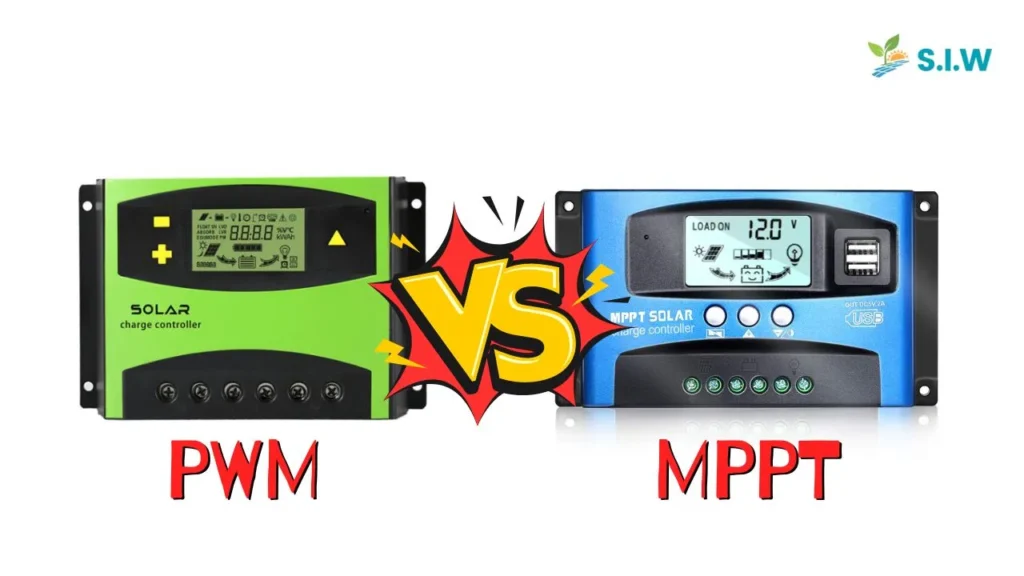In the evolving landscape of solar energy, the choice of solar charge controllers plays a critical role in optimizing system performance and ensuring longevity. Pulse Width Modulation (PWM) and Maximum Power Point Tracking (MPPT) are two prominent technologies that stand at the forefront of this decision. In this article, we will delve into the intricacies of both systems to provide a comprehensive comparison that aids in selecting the most suitable option for your solar power setup.
Understanding PWM Solar Charge Controllers
Pulse Width Modulation (PWM) charge controllers represent a traditional method of managing solar energy. They operate by switching the output voltage on and off, effectively controlling the amount of current reaching the batteries. This method is both efficient and cost-effective, making PWM a popular choice for small-scale solar systems.
How PWM Works
PWM controllers adjust the voltage and current to the batteries through a series of rapid on-off cycles. This technique allows the batteries to charge efficiently without overcharging. By maintaining the battery voltage at a specific level, these solar charge controllers can significantly enhance battery life. PWM is particularly effective when the solar panel’s voltage is close to the battery voltage, which minimizes energy loss.
Advantages of PWM Controllers
- Cost-Effective: PWM controllers are generally more affordable than their MPPT counterparts, making them accessible for budget-conscious consumers.
- Simplicity: Their straightforward design leads to easy installation and maintenance.
- Reliability: PWM technology has been in use for decades, offering proven reliability in various conditions.
Disadvantages of PWM Controllers
- Limited Efficiency: PWM controllers can only utilize the energy produced when the solar panel voltage is equal to or lower than the battery voltage. This limits their effectiveness in certain conditions.
- Reduced Energy Harvesting: In scenarios where solar panels generate more voltage than the batteries can handle, PWM controllers waste potential energy.
Exploring MPPT Solar Charge Controllers
Maximum Power Point Tracking (MPPT) technology revolutionizes how solar energy is harvested and managed. Unlike PWM, MPPT controllers are designed to optimize the power output from solar panels by adjusting the electrical operating point of the modules.
How MPPT Works
MPPT controllers continually monitor the voltage and current output of the solar panels to ensure they are operating at their maximum power point. By converting excess voltage into additional current, MPPT controllers can extract more energy from the solar panels, especially in varied sunlight conditions.
Advantages of MPPT Controllers
- Higher Efficiency: MPPT controllers can improve energy harvest by up to 30% compared to PWM systems, particularly in low-light or cloudy conditions.
- Adaptability: These controllers can effectively manage higher voltage solar panels, allowing for greater flexibility in system design.
- Optimal Charging: MPPT technology ensures batteries are charged more efficiently, resulting in better performance and longevity.
Disadvantages of MPPT Controllers
- Cost: MPPT controllers typically come with a higher price tag, which may be a barrier for some users.
- Complexity: The advanced technology and features may require more complex installation and maintenance.
Performance Comparison: PWM vs MPPT
Efficiency
When comparing efficiency, MPPT clearly has the upper hand. While PWM systems are effective in ideal conditions, they fall short when the solar panel output exceeds battery voltage. MPPT systems can adapt to fluctuating conditions, ensuring maximum power extraction at all times.
Cost Consideration
The initial investment is a crucial factor for many consumers. While PWM controllers are cheaper upfront, the long-term benefits of MPPT—such as increased energy production and improved battery life—often justify the higher cost. Evaluating total cost over time can provide a clearer picture of which option is more economical.
Installation and Maintenance
PWM controllers generally require less technical knowledge for installation, while MPPT systems may necessitate professional help due to their complexity. However, both types of controllers are designed for longevity, and with proper care, they can serve users effectively for many years.
When to Choose PWM or MPPT
Choosing PWM Controllers
- Small Scale Systems: If you are operating a small solar setup, such as for recreational vehicles or boats, PWM controllers may suffice.
- Budget Constraints: For those prioritizing cost savings over maximum efficiency, PWM is a sensible choice.
Choosing MPPT Controllers
- Larger Systems: For residential solar installations or larger systems where energy production is crucial, MPPT is often the better option.
- Variable Weather Conditions: If you live in an area with inconsistent sunlight, MPPT technology ensures that your system performs optimally regardless of weather fluctuations.
Choosing between PWM and MPPT solar charge controllers ultimately depends on your specific needs, budget, and energy goals. While PWM offers a cost-effective and reliable solution for smaller systems, MPPT stands out as the superior choice for maximizing energy efficiency and adapting to diverse solar conditions. As we transition towards a more sustainable future, understanding these technologies will empower users to make informed decisions that optimize their solar energy systems.








